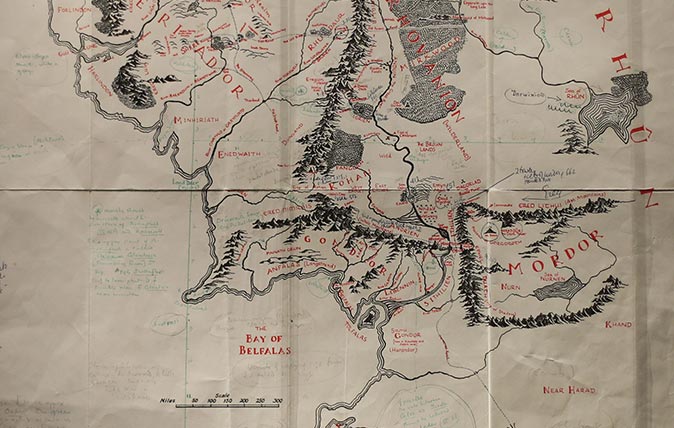Huon Mallalieu tells the story of the small museum in Middlesex, where you'll find the last records of the county before it became overrun by suburbia.
‘Greatly daring, we emigrated to Pinner, in still rural Middlesex. It was an adventure we never regretted. We rented a house where I could work at home. It was among a little group of similar villas, surrounded on nearly every side by open country.’
Alas for rural Middlesex, it was not to last.

Testing Artificial Teeth. Credit: The Heath Robinson Museum at Pinner, www.heathrobinsonmuseum.org.
In 1918, 10 years after William Heath Robinson and his family had settled in Pinner, they moved again to be further away from London, to Cranleigh in Surrey. The book illustrations that he produced during the 10 Middlesex years are among the last records of the county’s nature before it was overrun by suburbia. The association makes Pinner a fitting home for the Heath Robinson Museum at West House.
‘The war provided new inspiration for his devices and inventions, such as the ‘Pilsener-pump’ for stealing the enemy beer ration’
During those years, Heath Robinson ran the two strands of his art – serious illustration and comic drawing – in tandem, until the First World War ended the Edwardian appetite for luxuriously produced editions of Shakespeare, Rabelais and Malory. At the same time, the war provided new inspiration for his devices and inventions, such as the ‘Pilsener-pump’ for stealing the enemy beer ration or the Hunnish use of laughing gas, which were as popular in the trenches as on the Home Front.
By the time he died in 1944, decades spent gently satirising modern life, as well as renewed humorous war work, meant that, although his more serious early career was largely forgotten, his ‘Heath Robinson contraptions’ were embedded in the national consciousness.

Huns using laughing gas. Credit: The Heath Robinson Museum at Pinner, www.heathrobinsonmuseum.org.
The William Heath Robinson Trust was set up in 1992 to conserve and exhibit the collection formed by his daughter Joan Brinsmead, to which it has added over the years. Then, in 2001, the opportunity arose to form a new charity combining its aims with the restoration of West House, Pinner, a Regency villa with landscaped gardens and a lake, which had been given to Harrow Council in the 1930s by descendants of Lord Nelson and Lady Hamilton.
The grounds had become the Memorial Park, but the house was falling apart. Local enthusiasm, together with grants and legacies, has brought it back from near death. It has two main exhibition spaces, one devoted to selections from the Heath Robinson collections, the other to work by contemporaries.
‘She wrote and drew stories based on the very poor children in her father’s London parishes, tempering robust social commentary with humour’
When I visited in 2018, on show were ‘Heath Robinson’s Home Life’ and watercolours by two Edwardian illustrators who were almost unknown to me: Alice Bolingbroke Woodward and Edith Farmiloe. The first illustrated Peter Pan and Alice’s Adventures in Wonderland; the second wrote and drew stories based on the very poor children in her father’s London parishes, tempering robust social commentary with humour.
The museum and its exhibition, Charles Keeping: Londoner and Illustrator’ are closed until further notice, but you can find out more by visiting www.heathrobinson.org and www.heathrobinsonmuseum.org. The trust welcomes gifts of artwork, books, letters and relevant ephemera. Call 020–8866 8420 to get in contact.

In Focus: The wartime masterpieces of Alfred Munnings
Huon Mallalieu welcomes the opportunity to see a significant body of wartime paintings alongside other works by Munnings in his

In Focus: The Spanish painter whose visceral depictions of martyrdom still have the power to shock
The unflinching representations of brutality in Jusepe de Ribera's images of martyrdom is the focus of a new exhibition, the

In Focus: The charmed life of Paddy Leigh Fermor and friends in Greece
The iconic writer Paddy Leigh Fermor and two of his friends in Greece – both artists, one a local man and

In Focus: The evocative, sensual masterpiece created in the wake of the First World War
Edward Burra was too young to have fought in the First World War, but his powerful oil painting The Snack

In Focus: The hand-drawn maps from which JRR Tolkien launched Middle-earth
'I wisely started with a map and made the story fit,' JRR Tolkien once wrote. A new exhibition in Oxford





